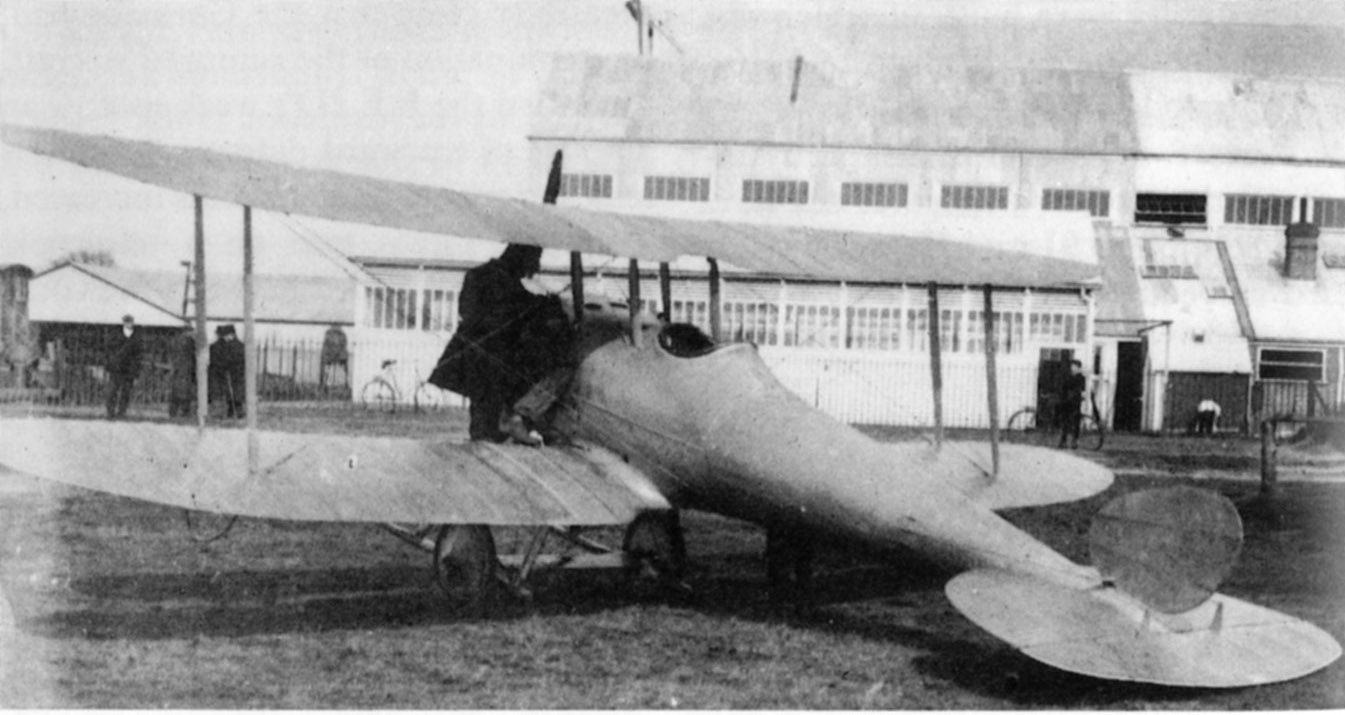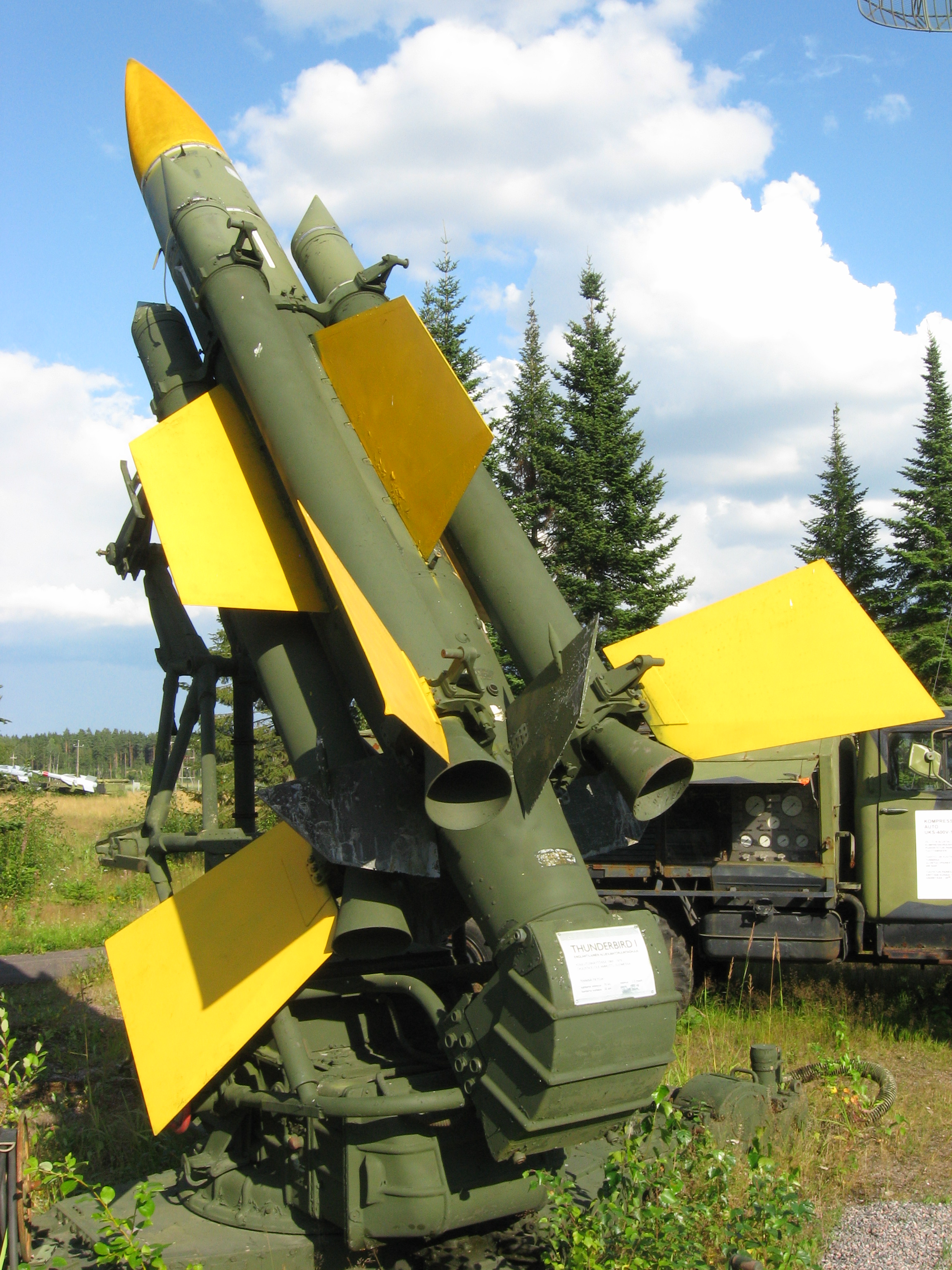|
Green Sparkler
Blue Envoy (a Rainbow Code name) was a British project to develop a ramjet-powered surface-to-air missile. It was tasked with countering supersonic bomber aircraft launching stand-off missiles, and thus had to have very long range and high-speed capabilities. The final design was expected to fly at with a maximum range of over . Development started as Green Sparkler sometime in the early 1950s. Green Sparkler featured active radar homing, but it was quickly decided this was beyond the state of the art. Replacing the active homing with semi-active radar homing produced Blue Envoy. The designs were otherwise similar, and similar to the US CIM-10 Bomarc as well. Test launches of sub-scale models were carried out successfully, and development of the new ramjet engines and seeker electronics was well advanced when the project was cancelled in April 1957 as part of the 1957 Defence White Paper. Its cancellation made Blue Envoy "possibly the most enigmatic project in the field of 1950s ... [...More Info...] [...Related Items...] OR: [Wikipedia] [Google] [Baidu] |
Surface-to-air Missile
A surface-to-air missile (SAM), also known as a ground-to-air missile (GTAM) or surface-to-air guided weapon (SAGW), is a missile designed to be launched from the ground to destroy aircraft or other missiles. It is one type of anti-aircraft system; in modern armed forces, missiles have replaced most other forms of dedicated anti-aircraft weapons, with anti-aircraft guns pushed into specialized roles. The first attempt at SAM development took place during World War II, but no operational systems were introduced. Further development in the 1940s and 1950s led to operational systems being introduced by most major forces during the second half of the 1950s. Smaller systems, suitable for close-range work, evolved through the 1960s and 1970s, to modern systems that are man-portable. Shipborne systems followed the evolution of land-based models, starting with long-range weapons and steadily evolving toward smaller designs to provide a layered defence. This evolution of design increasin ... [...More Info...] [...Related Items...] OR: [Wikipedia] [Google] [Baidu] |
Bloodhound (missile)
The Bristol Bloodhound is a British ramjet powered surface-to-air missile developed during the 1950s. It served as the UK's main air defence weapon into the 1990s and was in large-scale service with the Royal Air Force (RAF) and the forces of four other countries. Part of sweeping changes to the UK's defence posture, the Bloodhound was intended to protect the RAF's V bomber bases to preserve the deterrent force, attacking bombers that made it past the Lightning interceptor force. Bloodhound Mk. I entered service in December 1958, the first British guided weapon to enter full operational service. This was part of Stage 1 upgrades to the defensive systems, in the later Stage 2, both Bloodhound and the fighters would be replaced by a longer-range missile code named Blue Envoy. When this was ultimately cancelled in 1957, parts of its design were worked into Bloodhound Mk. II, roughly doubling the range of the missile. The Mk. I began to be replaced by the Mk. II starting in 1964 ... [...More Info...] [...Related Items...] OR: [Wikipedia] [Google] [Baidu] |
Active Radar Seeker
Active radar homing (ARH) is a missile guidance method in which a missile contains a radar transceiver (in contrast to semi-active radar homing, which uses only a passive radar, receiver) and the electronics necessary for it to find and track its target autonomously. The NATO brevity code for an air-to-air active radar homing missile launch is fox (code word), fox three. Advantages There are two major advantages to active radar homing: * As the missile is tracking the target it is going to be much closer to the target than the launching platform during the terminal phase, thus the missile's tracking can be much more accurate and better resistant to electronic countermeasures. Active radar homing missiles have some of the best kill probability, kill probabilities, along with missiles employing track-via-missile guidance. * Because the missile is totally autonomous during the terminal phase, the launch platform does not need to have its radar enabled at all during this phase, an ... [...More Info...] [...Related Items...] OR: [Wikipedia] [Google] [Baidu] |
Command Guidance
Command guidance is a type of missile guidance in which a ground station or aircraft relay signals to a guided missile via radio control or through a wire connecting the missile to the launcher and tell the missile where to steer to intercept its target. This control may also command the missile to detonate, even if the missile has a fuze. Typically, the system giving the guidance commands is tracking both the target and the missile or missiles via radar. It determines the positions and velocities of a target and a missile, and calculates whether their paths will intersect. If not, the guidance system will relay commands to a missile, telling it to move the fins in a way that steers in the direction needed to maneuver to an intercept course with the target. If the target maneuvers, the guidance system can sense this and update the missiles' course continuously to counteract such maneuvering. If the missile passes close to the target, either its own proximity or contact fuze will ... [...More Info...] [...Related Items...] OR: [Wikipedia] [Google] [Baidu] |
Royal Aircraft Establishment
The Royal Aircraft Establishment (RAE) was a British research establishment, known by several different names during its history, that eventually came under the aegis of the Ministry of Defence (United Kingdom), UK Ministry of Defence (MoD), before finally losing its identity in mergers with other institutions. The first site was at Farnborough Airfield ("RAE Farnborough") in Hampshire to which was added a second site RAE Bedford (Bedfordshire) in 1946. In 1988 it was renamed the Royal Aerospace Establishment (RAE) before merging with other research entities to become part of the new Defence Research Agency in 1991. History In 1904–1906 the Army Balloon Factory, which was part of the Army School of Ballooning, under the command of Colonel James Templer (balloon aviator), James Templer, relocated from Aldershot to the edge of Farnborough Common in order to have enough space to inflate the new "dirigible balloon" or airship which was then under construction.Walker, P; Early Avi ... [...More Info...] [...Related Items...] OR: [Wikipedia] [Google] [Baidu] |
Bristol Aerospace
Bristol Aerospace is a Canadian aerospace firm located in Winnipeg, Manitoba and is an operating division of Magellan Aerospace. Today it is the only remaining and surviving subsidiary of Bristol Aeroplane Company. History Bristol Aerospace began in 1930 as the MacDonald Brothers Aircraft Company. Brothers Jim and Grant MacDonald moved to Winnipeg from Nova Scotia in 1904 to start a sheet metal business. Brother Edwin joined them later and by the late 1920s air travel had become an important means of transportation with Winnipeg becoming a hub for travel to the booming west. The MacDonalds formed ''MacDonald Brothers Aircraft Company'' in 1930, producing seaplane floats under licence from EDO Corporation of New York City. The company produced floats into the early 1980s. WWII During World War II the factory built training aircraft and by war's end had grown to 4,500 employees. At the end of the war, MacDonald Bros. became an important repair and overhaul centre for the Royal C ... [...More Info...] [...Related Items...] OR: [Wikipedia] [Google] [Baidu] |
Thunderbird (missile)
The English Electric Thunderbird was a British surface-to-air missile produced for the British Army. Thunderbird was primarily intended to attack higher altitude targets at ranges up to approximately , providing wide-area air defence for the Army in the field. AA guns were still used for lower altitude threats. Thunderbird entered service in 1959 and underwent a major mid-life upgrade to Thunderbird 2 in 1966, before being slowly phased out by 1977. Ex-Army Thunderbirds were also operated by the Royal Saudi Air Force after 1967. Thunderbird had performance similar to other semi-portable missiles like the US MIM-23 Hawk and fully mobile Soviet 2K11 Krug, although it pre-dates both of these systems. After its mid-life upgrades, which shared several components with the RAF's Bristol Bloodhound, Thunderbird featured a continuous-wave radar semi-active homing system that was highly resistant to radar jamming and deception, and was able to track targets even at very low altitudes. Th ... [...More Info...] [...Related Items...] OR: [Wikipedia] [Google] [Baidu] |
English Electric
N.º UIC: 9094 110 1449-3 (Takargo Rail) The English Electric Company Limited (EE) was a British industrial manufacturer formed after the Armistice of 11 November 1918, armistice of World War I by amalgamating five businesses which, during the war, had been making munitions, armaments and aeroplanes. It initially specialised in industrial electric motors and transformers, railway locomotives and traction equipment, diesel motors and steam turbines. Its activities were later expanded to include consumer electronics, nuclear reactors, guided missiles, military aircraft and mainframe computers. Two English Electric aircraft designs became landmarks in British aeronautical engineering; the Canberra and the Lightning. In 1960, English Electric Aircraft (40%) merged with Vickers (40%) and Bristol (20%) to form British Aircraft Corporation. In 1968 English Electric's operations were merged with GEC's, the combined business employing more than 250,000 people. Foundation Aiming ... [...More Info...] [...Related Items...] OR: [Wikipedia] [Google] [Baidu] |
Surface-to-air Missiles
A surface-to-air missile (SAM), also known as a ground-to-air missile (GTAM) or surface-to-air guided weapon (SAGW), is a missile designed to be launched from the ground to destroy aircraft or other missiles. It is one type of anti-aircraft system; in modern armed forces, missiles have replaced most other forms of dedicated anti-aircraft weapons, with anti-aircraft guns pushed into specialized roles. The first attempt at SAM development took place during World War II, but no operational systems were introduced. Further development in the 1940s and 1950s led to operational systems being introduced by most major forces during the second half of the 1950s. Smaller systems, suitable for close-range work, evolved through the 1960s and 1970s, to modern systems that are man-portable. Shipborne systems followed the evolution of land-based models, starting with long-range weapons and steadily evolving toward smaller designs to provide a layered defence. This evolution of design increasin ... [...More Info...] [...Related Items...] OR: [Wikipedia] [Google] [Baidu] |
Anti-aircraft Artillery
Anti-aircraft warfare, counter-air or air defence forces is the battlespace response to aerial warfare, defined by NATO as "all measures designed to nullify or reduce the effectiveness of hostile air action".AAP-6 It includes surface based, subsurface ( submarine launched), and air-based weapon systems, associated sensor systems, command and control arrangements, and passive measures (e.g. barrage balloons). It may be used to protect naval, ground, and air forces in any location. However, for most countries, the main effort has tended to be homeland defence. NATO refers to airborne air defence as counter-air and naval air defence as anti-aircraft warfare. Missile defence is an extension of air defence, as are initiatives to adapt air defence to the task of intercepting any projectile in flight. In some countries, such as Britain and Germany during the Second World War, the Soviet Union, and modern NATO and the United States, ground-based air defence and air defence aircraft ... [...More Info...] [...Related Items...] OR: [Wikipedia] [Google] [Baidu] |
Interceptor Aircraft
An interceptor aircraft, or simply interceptor, is a type of fighter aircraft designed specifically for the defensive interception role against an attacking enemy aircraft, particularly bombers and reconnaissance aircraft. Aircraft that are capable of being or are employed as both ‘standard’ air superiority fighters and as interceptors are sometimes known as fighter-interceptors. There are two general classes of interceptor: light fighters, designed for high performance over short range; and heavy fighters, which are intended to operate over longer ranges, in contested airspace and adverse meteorological conditions. While the second type was exemplified historically by specialized night fighter and all-weather interceptor designs, the integration of mid-air refueling, satellite navigation, on-board radar and beyond visual range (BVR) missile systems since the 1960s has allowed most frontline fighter designs to fill the roles once reserved for specialised night/all-weathe ... [...More Info...] [...Related Items...] OR: [Wikipedia] [Google] [Baidu] |





.jpg)


.jpg)